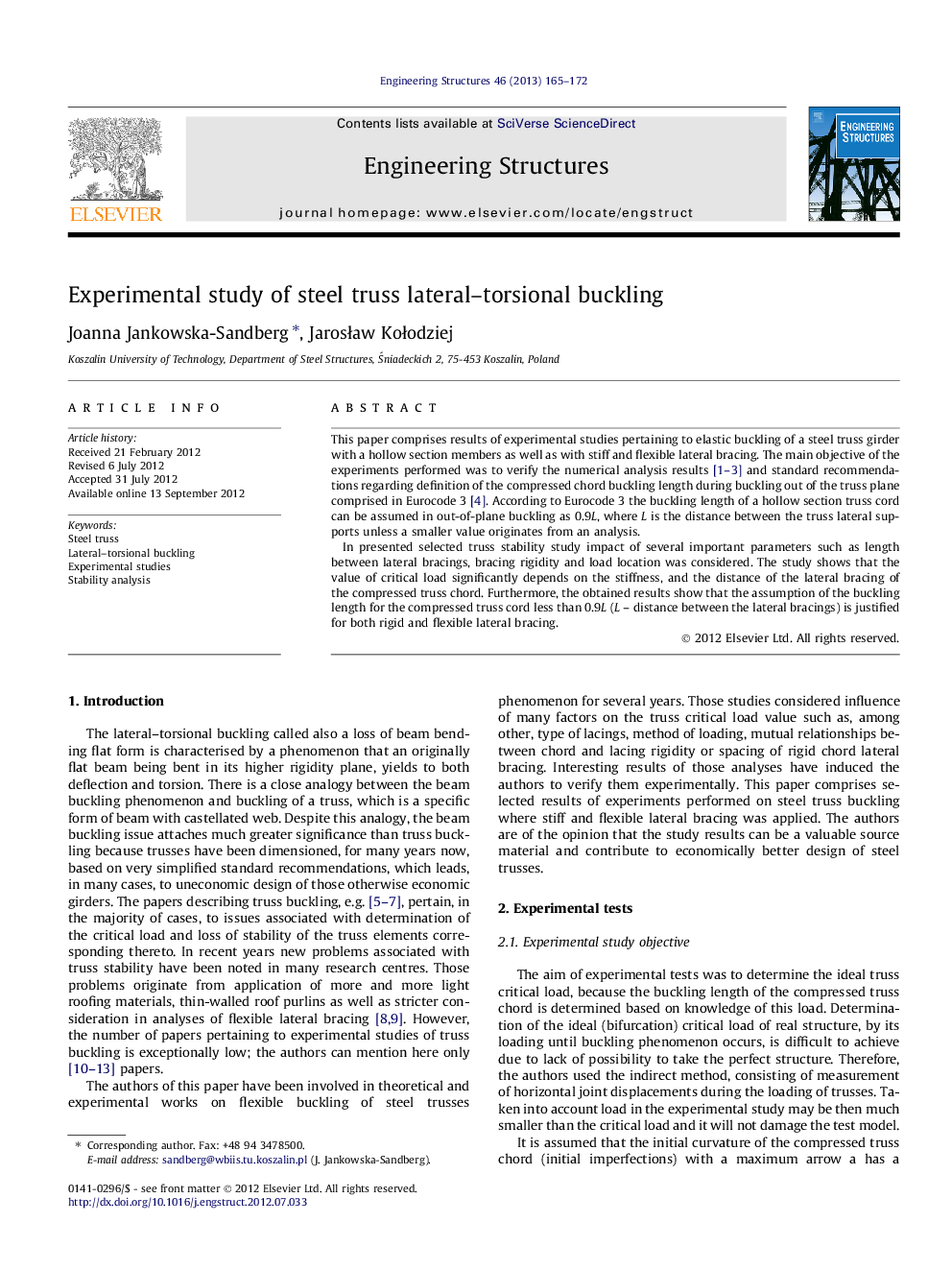| Article ID | Journal | Published Year | Pages | File Type |
|---|---|---|---|---|
| 267319 | Engineering Structures | 2013 | 8 Pages |
This paper comprises results of experimental studies pertaining to elastic buckling of a steel truss girder with a hollow section members as well as with stiff and flexible lateral bracing. The main objective of the experiments performed was to verify the numerical analysis results [1] and [3] and standard recommendations regarding definition of the compressed chord buckling length during buckling out of the truss plane comprised in Eurocode 3 [4]. According to Eurocode 3 the buckling length of a hollow section truss cord can be assumed in out-of-plane buckling as 0.9L, where L is the distance between the truss lateral supports unless a smaller value originates from an analysis.In presented selected truss stability study impact of several important parameters such as length between lateral bracings, bracing rigidity and load location was considered. The study shows that the value of critical load significantly depends on the stiffness, and the distance of the lateral bracing of the compressed truss chord. Furthermore, the obtained results show that the assumption of the buckling length for the compressed truss cord less than 0.9L (L – distance between the lateral bracings) is justified for both rigid and flexible lateral bracing.
► The research covered a steel truss with stiff and flexible chord lateral bracing. ► The standard recommendations of chord buckling length are too conservative. ► A numerical analysis to determine buckling length of truss chord is recommended.
